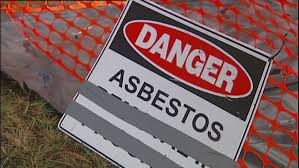
Telco e-Bulletin 2013 - #16
- Commuter use: are you covered for workers’ compensation?
- Workers’ compensation: traineeships and ride-ons
- CWU pursues fibre splicer upgrades
- Telstra asbestos clean-up
- CWU meets with Telstra on field workforce management
- Telstra to slash Wireless Delivery staff - just as it announces major wireless contract
- NBN design work being sent offshore
- Jobs go as Silcar restructures
- Unfair dismissal: CWU has major win
1. Commuter use: are you covered for workers’ compensation?
The CWU has tackled Telstra over the company’s refusal to pay workers’ compensation to an employee injured while driving home from work in a commuter use vehicle.
The employee, a CWU member, suffered the injury when another vehicle ran into the back of his van as he was returning home. Telstra compensation officers said that as he was not actually at work he was not entitled to compensation.

This involved employees garaging their work vehicle at home and then logging on in the morning to get their first job before leaving home.
Since that time the CWU has had to clarify the workers’ compensation issue more than once.
But on each occasion the outcome has been the same: confirmation that employees who are required to take vehicles home as part of their job are “at work” for the purposes of workers’ comp.
After all, if they are not under direction to take the vehicle home and if the whole arrangement is entirely voluntary, then employees must also be free to leave their vehicles in the care of Telstra overnight if that suits them. Yet when employees have done this in the past they have been threatened with disciplinary action.
Telstra can’t have it both ways. The log-on arrangements were introduced as a productivity measure which in effect extended the period when an employee was on duty - but without providing any monetary compensation. The flip-side of that arrangement is the extended period during which workers’ compensation protections apply.
The CWU will be pursuing this question until we achieve a satisfactory resolution on behalf of all affected members.
2. Workers’ compensation: traineeships and ride-ons
Telstra’s has recently refused to pay workers’ compensation to a CWU member injured while driving home from work in a commuter use vehicle.
That raises some important issues not only for employees but for any trainees they may be asked to take in their vehicles before or after being on the job.
Under the current ISGM training programme, for instance, Telstra staff are expected to pick the trainee up on the way to the first job. So is the trainee covered for workers’ comp during this period or not? Whose responsibility is it if an injury occurs?
CWU members approached to participate in such traineeship arrangements are urged to seek clarification from Telstra on these questions before agreeing to pick -up and drop- off trainees.
3. CWU pursues fibre splicer upgrades
The CWU has held further discussions with Telstra on the question of gradings for employees doing fibre splicing.
As reported in E-bulletin 15, the CWU has sought upgrades for a number of members now doing this work. Telstra has said that it has reviewed the work actually being performed and has concluded that it is rightly graded as CFW4 level.

The CWU believes that the work in question involves testing or certification of the link and so more properly aligns with functions performed at CFW5 and CFW7 levels.
The CWU is concerned that Telstra’s current position amounts to a downgrading of skills – an approach which is driven solely by cost-cutting and which acts as a disincentive to overall workforce upskilling.
The CWU is currently fighting this same approach in relation to testers. In both cases, we regard the classification decisions being made by the company as contrary to the current agreed job descriptions and so a breach of the Enterprise Agreement.
Further updates on both issues will be provided as these matters are progressed.
4. Telstra pits and exchanges clean-up
The CWU is continuing in discussion with Telstra over the issue of asbestos in the company’s infrastructure – both pits/ducts and exchange buildings.
The NBN-related asbestos incidents earlier this year have highlighted the need for Telstra to adopt a more systematic and proactive approach to this problem than has recently been the case.
The CWU has indicated its willingness to assist any programme designed to identify and record asbestos-related hazards throughout the company. However we have raised concerns about the use of the current Customer Network Improvements (CNI) data base to record instances of broken pit lids, broken tiles in exchanges etc.

We have suggested to Telstra that arrangements for prioritising asbestos-related repairs need to be put in place if employees are to be engaged by this programme.
Telstra has now informed the CWU that it has allocated funds to ensure a centrally coordinated response to both asbestos-related CNI reports and other onsite issues identified by employees.
As part of its programme it has also:
- Stepped up cleaning and repair of exchange buildings, with the target number of exchanges rising from 1,000 to 2,000. Some 1500 are currently programmed for attention.
- Programmed 14,000 pits for remediation
- Initiated a process for making the asbestos site register electronic
The CWU encourages its members to assist in this programme by reporting both asbestos-related problems such as broken pit lids and any other onsite hazards they identify. If no action is taken within a reasonable period of time, report the issue to your union branch.
5. CWU meets with Telstra on field workforce management
The CWU met with Telstra on 5 September to pursue issues of current concern to members working in the Customer Field Workforce.
The E-bulletin has previously reported on a number of related Telstra initiatives which it says are designed to address internal “peak load” labour shortages. These include approaches to staff to work additional hours and support for an “accelerated” training programme aimed at producing more ISGM sub-contractors.
CWU members are justifiably concerned that whatever Telstra’s short-term plans might be, its ultimate aim is to use these subbies to replace rather than to supplement its own workforce.
Adding to these suspicions is the fact that Telstra is not releasing many CTs for training on NBN-related work, despite having been given $100 million by the Commonwealth to do so.
At the meeting of 5 September, the CWU sought an explanation of Telstra’s overall CAN workforce strategy.
In response, Telstra indicated that:
- The company is committed to retaining an internal field workforce.
- Telstra is continuing to recruit trainees into permanent positions. Training for those working in metro area is focussed on emerging technical areas (Digital Business, NBN). Those working in regional areas need to be more broadly skilled.
- The AiGTS/ISGM trainees are currently being trained to work on copper.
- As the new resources come on stream, current CTs will be freed up to do NBN-related training. Telstra estimates that for experienced CTs the bridging training involved can be conducted in a relatively short period of time.
The CWU has asked for further assurances on the future of the internal CAN workforce.
We also continued to express our concerns over the training programme for the ISGM trainees. This aims to turn out fully qualified Certificate III CTs, capable of surviving as “independent” contractors, in a 6 month period. Cert III training is more typically spread over 1-2 years.
Telstra has agreed to provide the CWU with further information about this programme. We will meet again next week to pursue these issues.
6. Telstra to slash Wireless Delivery staff – just as it announces major wireless project
With its usual impeccable logic, Telstra is proposing to cut staff numbers from its Wireless Delivery section just as it takes on a major new wireless project on behalf of the Queensland state government.
Telstra notified the CWU of its proposal to cut 42 wireless positions – mostly riggers – on 20 August. The union subsequently met with Telstra to discuss the proposed redundancies on Tuesday 27, with the CWU questioning the rationale for the decision.

But then – lo and behold –on 3 September comes the announcement that Telstra, in partnership with Motorola, has won a $457.3 million contract to build a digital voice and narrowband date network in Queensland.
The network is intended for use by Queensland public safety agencies ahead of the G20 Leaders Summit in 2014 and the Commonwealth Games in 2018.
Telstra will be responsible for designing, building, operating, and maintaining the network which will initially be rolled out to Brisbane, the Gold Coast and Cairns in preparation for the G20 summit. Queensland Premier Campbell Newman said that It would then be rolled out to the rest of the South-East in time for the 2018 Commonwealth Games.
“There's also the potential to eventually extend the system to cover the rest of the state," he said.
Plenty of work for wireless techs for the next 5 or more years then! The CWU will be pressing Telstra to explain its workforce plans in this area when we meet again on this issue next week.
7. NBN design work being sent offshore
According to recent press reports, elements of work on the National Broadband Network (NBN) roll-out have been sent to China and to India.
On 2 September, the Victorian Age newspaper reported that NBN wireless contractor Ericsson had last year sent radiofrequency design work for the fixed wireless component of the NBN to China. And currently integration work on the network is headed for India.

In a pattern that will be all too familiar to E-bulletin readers, Ericsson is said to have recently brought more than 15 Indian workers to Australia to learn about design on the NBN's fixed-wireless network.
At the same time, the Australian Financial Review reports that in large part the delays in rolling out the NBN wireless network have been caused by the “fuzzy” data used as the basis of its design. The data being used is provided by the national geospatial data base G-NAF but it is in many cases not adequate for the task.
“One of the worst cases I had was the G-NAF database told us there were 150 [premises] and when we actually had a look at it, it was in the middle of a ¬paddock,” former NBN Co CEO Mike Quigley told a conference last year.
Sending design work to India seems unlikely to help resolve such problems.
The CWU does not believe that these recent examples of NBN offshoring are unique. The union has received a number of reports over the last 12 months of fibre design work also being offshored, but has not been able to verify them. This time, however, NBN Co has confirmed the practice.
The National Broadband Network project was supposed, among other things, to generate Australian jobs. In the CWU’s view the offshoring of NBN work is completely unacceptable. Insofar as the problem is skill shortages, these could easily have been anticipated. They have been evident for years.
And as the CWU has repeatedly argued, labour costs should not be an issue: the project should be funded on a basis that supports local employment at a level at least in line with current market rates.
8. Jobs go as Silcar restructures
The restructuring of NBN contractor Silcar continues with the 2 September announcement of the axing of 250 positions from the company.
The cuts follow a number of departures by senior management in the wake of the takeover of the company by Leighton Holdings subsidiary Thiess in late July. Silcar had formerly been a joint venture between Thiess and Siemens.
In late August the company’s NBN project director, Dan Birmingham, the general manager of its communications arm, Saiful Chowdhury, and the general manager of asset and infrastructure management, Jeffrey Bretz, all left.
Industry sources suggest the departures will severely weaken the company’s operational capabilities.
Silcar is rumoured to be carrying losses of upwards of $60 million on its NBN contracts so far and despite having renewed its contract with NBN Co for another year is clearly in the midst of a major rethink of its current cost structures.
According to Thiess, the latest job cuts reflect cyclical factors as well as rationalisation of positions arising from the takeover. But industry on-line newsletter ZDnet reports that the redundancies are coming from NBN field scopers and designers.
So where will Silcar/Thiess’ design work be done in future? In India or China perhaps?
9. Unfair dismissal: CWU has major win
In a decision that has important implications for all CWU members, a full bench of the Fair Work Commission (FWC) has found that Australia Post unfairly dismissed three employees involved in the on-line transmission of sexually explicit material while at work.
Needless to say, viewing or transmitting such material at work is contrary to most companies’ policies and can be guaranteed to lead to some form of disciplinary action, including dismissal.

The original sackings occurred in 2010 and in November 2011 the Commission upheld the dismissals of two of the three employees, with the third being found to be unfairly dismissed but not reinstated.
In our appeal to the full bench against this decision, the CWU relied on the obviously discriminatory approach by Post as well as on the long record of service by the employees to argue that their dismissal was “unfair”. We also argued that the employees’ actions had not caused any harm or damage to anyone.
Our members have never denied that they transmitted the material. But the CWU successfully argued that, even if that was a “valid reason” for dismissal, the response by management could be shown, in context, to be “harsh and unjust”.
That context included what the full bench described in its decision as a “culture of tolerance” towards the behaviour in question, contrary to Australia Post’s stated “zero tolerance” policy.
It remains to be seen whether the employees will now be re-instated or compensated for Post’s unfair treatment. It is also possible that Post will appeal the decision.
In the meantime, members are reminded that despite this decision, viewing or transmitting sexually explicit material at work is, in the words of the Commission “a serious matter that put(s) them and their families at risk of significant personal hardship.”










